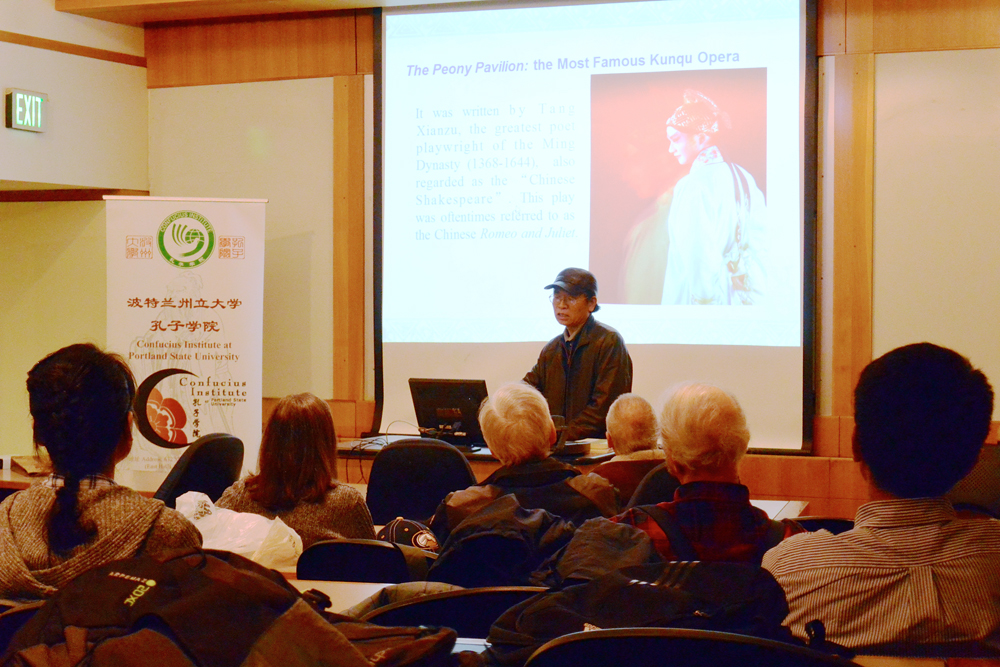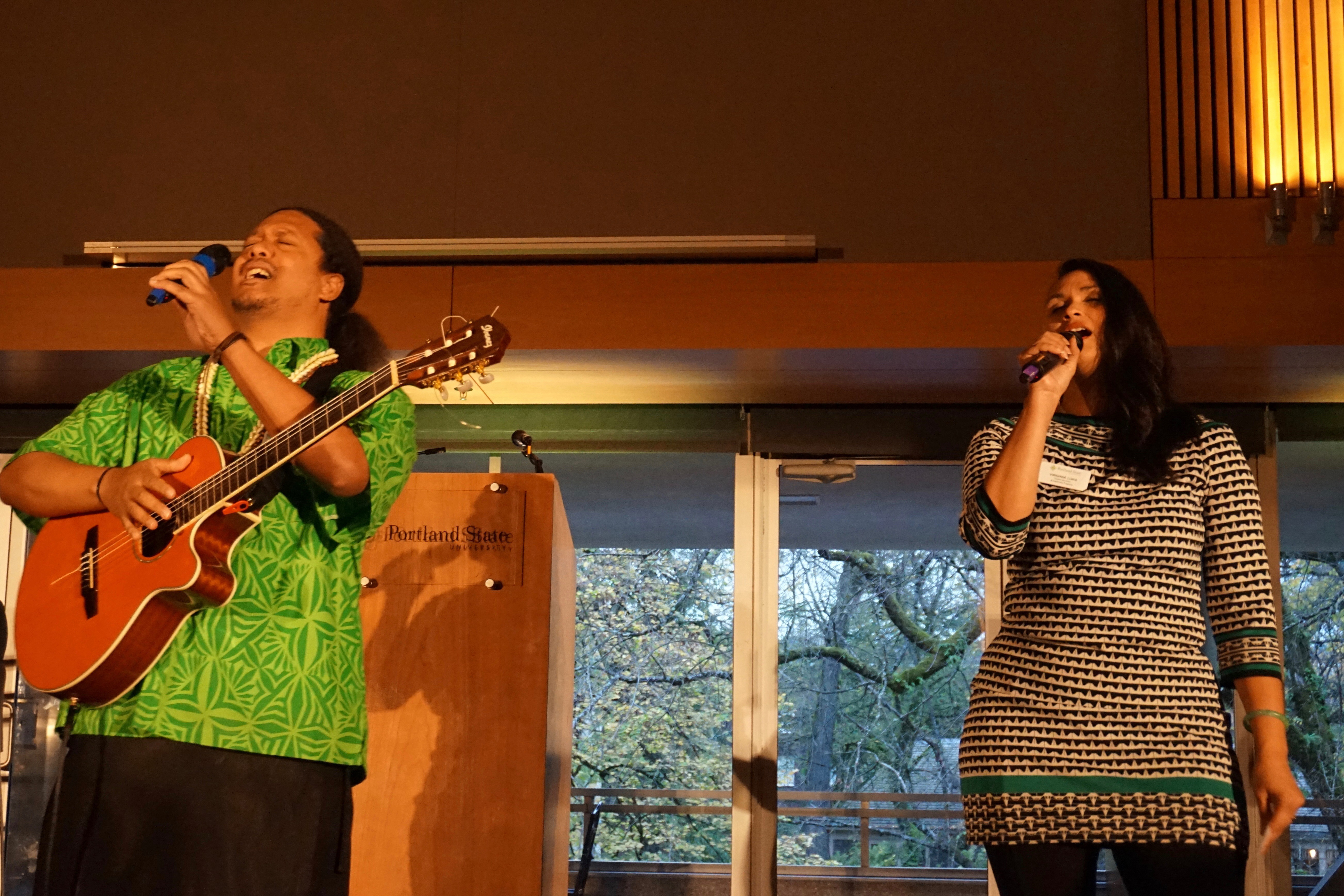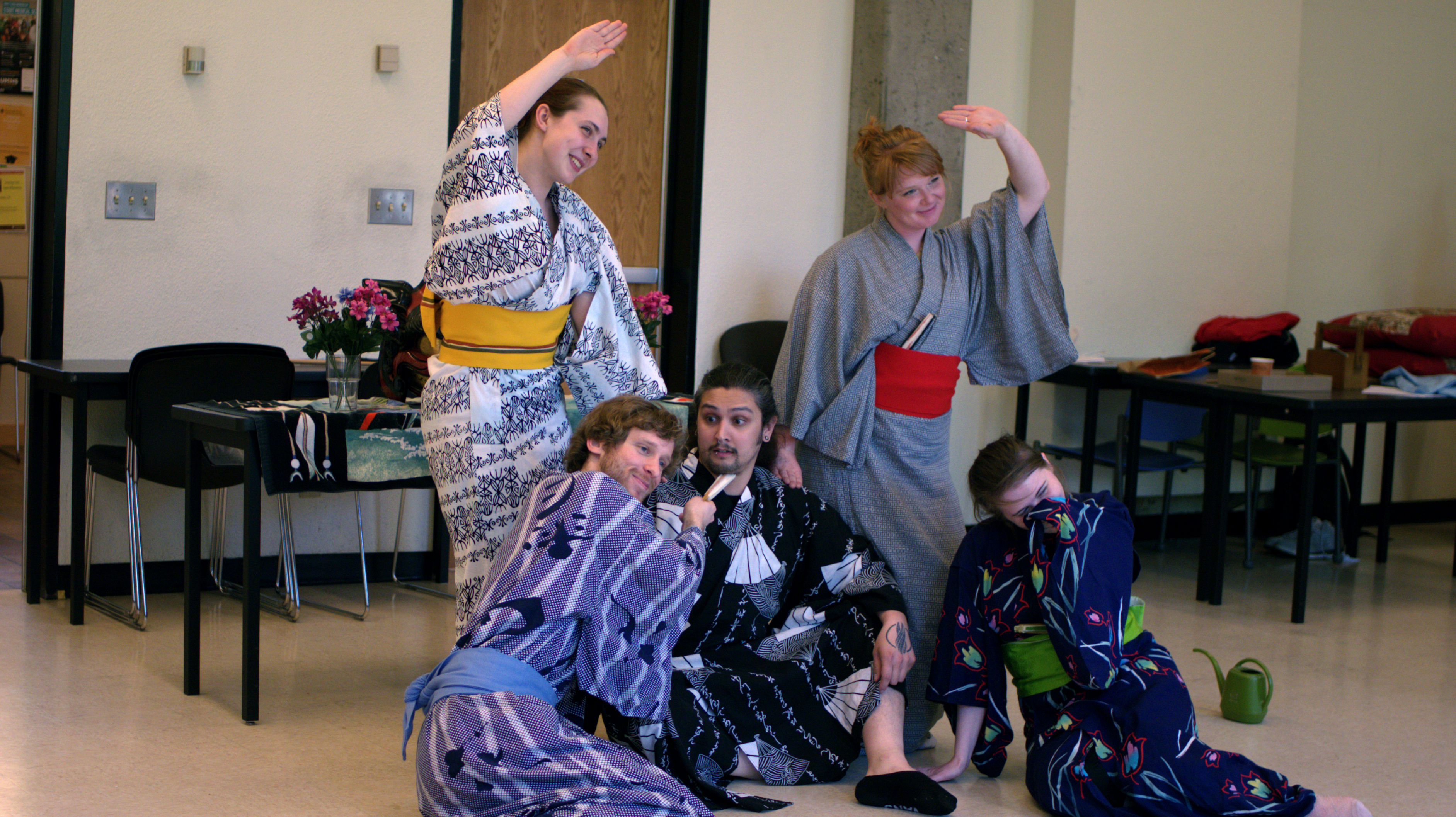The Confucius Institute hosted professor Hong Wang of Soochow University, China, on Friday, Feb. 6. Wang gave audiences an introduction to the history of Kunqu opera.
Wang, the head of translation research at Soochow University, visited Portland eight years ago for a conference and didn’t forget his experience.
“I was moved by the warm-hearted teachers, and now that I am back it feels like I have come home,” Wang said.
Wang gave a presentation on Kunqu, one of the highest artistic achievements in China. Kunqu derives from a region near Suzhou, often described as the Venice of the East.
The area is known for its production of local crafts like fans, wood carvings, jade carvings, silk tapestry and Cheongsam dress.
Kunqu is one of the oldest and most refined forms of traditional Chinese theater, dating back 600 years. It is known for its poetic eloquence and dramatic musical refinement. Often called the mother of Chinese opera, Kunqu holds mass influence on other forms of Chinese theater.
Elements that set it apart from other Chinese theater include its primary use of bamboo flutes, artistic movements on the stage and unrealistic stage settings that appeal to the audience’s imaginations.
Kunqu derives from the word Kunshan, one of the simple regional songs during the 14th century. It also derives from the artform chuanqi, or romance play. Over time the singing techniques used in Kunsham were improved. Chants became softer, finer and more intensely emotional until Kunqu was born.
“Kunqu was artistically refined over a period of 200 years and was prominently featured in the competing opera schools in China, becoming more fashionable both within China and abroad,” Wang said.
Yet as China entered the modern age, Kunqu lost the edge it used to have.
With dramatic changes in Chinese industry, Kunqu lost favor with many of its previous audiences. As a result, its popularity and social influence diminished. Fortunately, the art of Kunqu survived and is considered one of the fundamentals in how script writing and performing arts developed within China.
To put on a Kunqu opera, typically only 18 performers are needed, and troupes won’t use more than 30.
The hierarchy of typical roles is composed of Sheng, the young male character; Dan, the female character; Jing, the male character with face makeup; Mo, the middle-aged man and often main character; and Chou, the comedy character.
Some of the most famous Kunqu operas include “Snow in Summer,” “The Eternal Palace,” “The Legend of Leifeng Pagoda” and “Yearning for Earthly Delights,” which include issues of injustice, unrequited love and rebellious Buddhist nuns.
But the most famous piece of Kunqu opera is “The Peony Pavilion.”
“Tang Xianzu was regarded as the Chinese Shakespeare, and ‘The Peony Pavilion’ is often called the Chinese equivalent to ‘Romeo and Juliet,’” Wang said.
In the opera a young maiden has a fateful dream about her true love in a garden, falling ill and dying from heartbreak. Three years later, the man she dreamed about falls in love with a self-portrait of the young woman and brings her back to life.
Today there are still six professional Kunqu troupes in China.
Dr. Meiru Liu, professor and director of the Confucius Institute, concluded with news about the center’s upcoming events, starting with their Chinese New Year gala at the Smith Memorial Student Union Ballroom, which was held on Friday, Feb. 13.
“We have the Chinese New Year Fair on the 21 of February,” Liu said. “There will be all kinds of events, including one that will teach you how to make Chinese dumplings and sticky rice puddings.”






